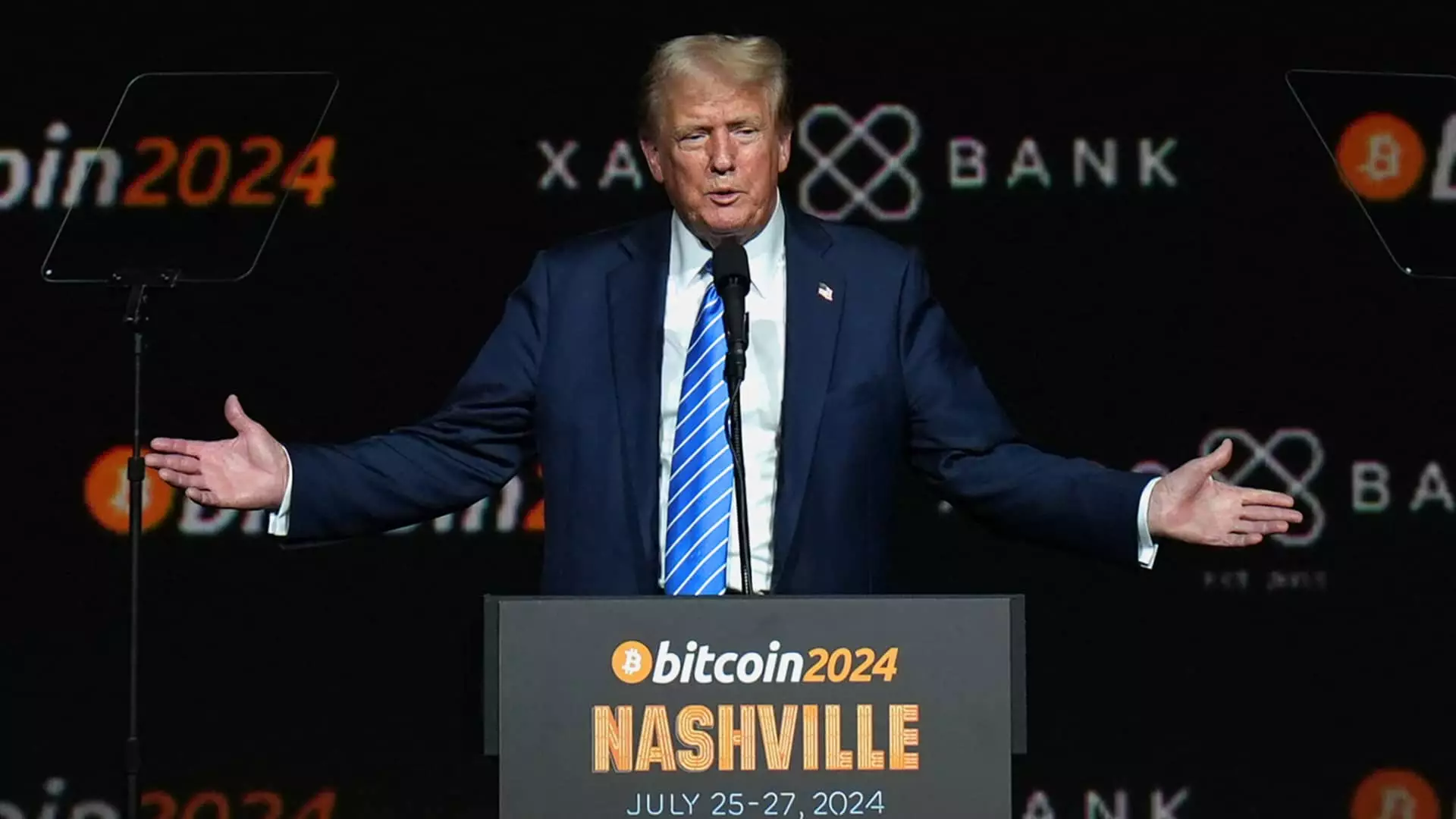The emergence of cryptocurrencies has reshaped finance and investment strategies across the globe. As traditional business moguls enter the blockchain arena, the implications for investors, markets, and regulatory bodies grow increasingly complex. A notable entrance into this arena has been made by former President Donald Trump through his crypto project, World Liberty Financial (WLF). Recently, WLF released a comprehensive document detailing its operations, mission, and token distribution plan, which raises significant questions regarding transparency, governance, and ethical considerations.
WLF’s recent 13-page report, aptly titled the “World Liberty Gold Paper,” outlines its intentions within the decentralized finance (DeFi) landscape. The document stipulates that the Trump family is slated to receive a staggering 22.5 billion “$WLFI” tokens, translating to an estimated $337.5 million at the launch price of 1.5 cents per token. This proposed financial windfall has sparked debates on the appropriateness of such wealth generation linked to a political figure’s name.
While WLF claims that its operations are not politicized and dissociates itself from any political campaign, the lineage of its leadership casts shadows on its legitimacy. The paper notes that Trump and his family will not hold any operational role, thereby reducing their legal liabilities—a significant maneuver that raises ethical flags. This arrangement essentially allows them to benefit financially while sidestepping potential accountability, which further complicates the regulatory landscape surrounding crypto projects.
The core of WLF’s operations appears to be designed around generating significant revenue for its backers rather than focusing on the broader community. According to the document, a Delaware-based entity, DT Marks DEFI LLC, is poised to capture a notable 75% of net protocol revenues, which includes income sources such as platform usage fees, token sales, and advertising. The remaining 25% is earmarked for a Puerto Rico-based entity—Axiom Management Group (AMG)—linked to some of the project’s co-founders.
An intriguing aspect of their financial strategy is the allocation of funds. The paper specifies that $30 million of initial revenues will be held in reserve to cover operating expenses. However, the vague language used to describe “net protocol revenue” begs the question: who exactly stands to benefit from this structure? By allocating such a large percentage of revenue to specific entities and allowing the Trump family to profit without direct involvement, WLF risks fostering a perception of exploitation, especially among ordinary investors who may not fully understand the risks and intricacies involved.
As of the most recent update, WLF reported only $12.9 million in token sales against a target of raising $300 million at a $1.5 billion valuation. This discrepancy raises serious concerns about the project’s viability and public trust. Crypto launches often benefit from an initial surge in interest, yet the fact that a well-known figure like Trump has not resulted in more substantial sales indicates a potential disconnect with both his base and the broader crypto community.
The differences in the token distribution plan—35% being set aside for the token sale, 32.5% for community growth, and only a modest 2.5% for advisors—present a skewed view of community-centric engagement. The emphasis on attracting financial investment rather than fostering a vibrant ecosystem raises questions about whether WLF is committed to innovation or merely capitalizing on its brand recognition.
The crypto landscape is fraught with both opportunity and peril, particularly when entwined with political figures. The infrastructure of World Liberty Financial highlights essential considerations regarding accountability, revenue generation, and ethical conduct. As potential investors scrutinize this venture, they must weigh the allure of early financial returns against the murky governance and operational realities laid out in the “World Liberty Gold Paper.”
Ultimately, WLF’s trajectory will be a critical case study in how personal politics and cryptocurrency can intertwine, for better or worse. Investors and stakeholders alike will need to remain vigilant and informed as this story unfolds in an industry that often grapples with the balance between innovation and responsibility.

